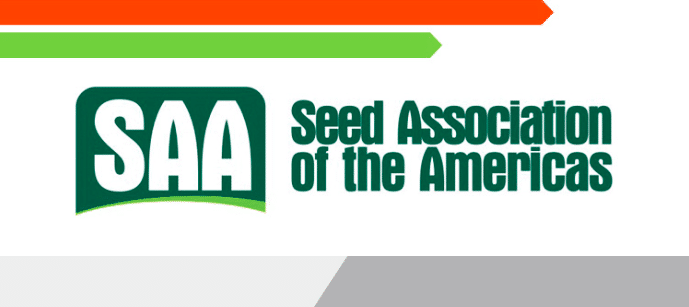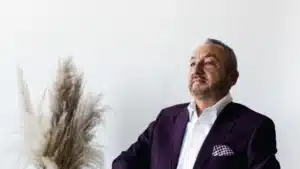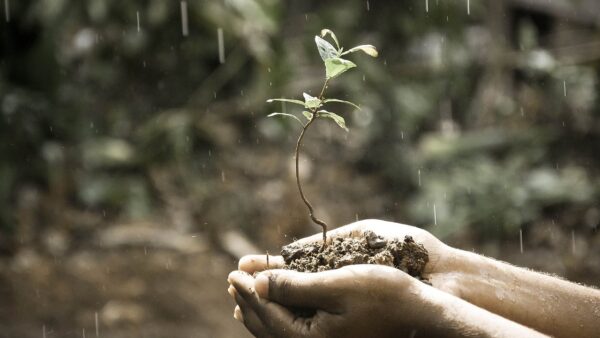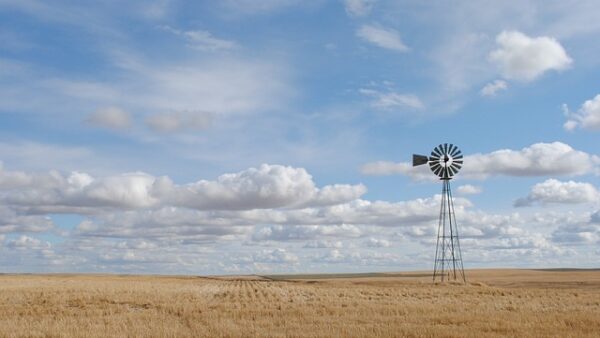From phytosanitary issues to intellectual property and from seed treatments to biotechnology, the Seed Association of the Americas is hard at work to protect the interests of the seed industry and facilitate the international movement of seed._x000D_
_x000D_
From small beginnings in 2005, and big ambitions, the Seed Association of the Americas has made monumental strides in serving as “the leading authority and representing with a unified voice” the seed industry throughout the Americas. The man responsible for many of those giant strides is Diego Risso, who joined SAA as executive director in 2009. But he’s quick to credit SAA members and staff who have put in countless hours to benefit the industry as a whole._x000D_
_x000D_
“We have based our unique strategy on working together with policymakers, regulators and national and international seed associations,” Risso says, noting that it takes time and patience to bring the right voices around the table and be able to collectively discuss issues of importance — not to mention moving toward policies, positions or implementation._x000D_
_x000D_
With steadfast support and a clear vision, SAA and its 21 members (including ordinary, associate and affiliate members) are finally seeing the fruits of their labor in the areas of biotechnology, intellectual property, phytosanitary and seed treatment. Work in each of these key areas is supported by a working group, and the name “working group” is an accurate description as conference calls can be lengthy, position papers are scrutinized, and consensus doesn’t always come easy._x000D_
_x000D_
Arguably one of the most important conversations happening throughout the international seed industry is plant breeding innovation and the use of new breeding techniques, shares Juan Kiekebusch, SAA senior adviser on biotechnology._x000D_
_x000D_
“This whole year has been centered around plant breeding innovations and discussions happening around the world, including in the Americas,” he says. “SAA is fully aligned with the International Seed Federation’s Plant Breeding Innovation Working Group and CropLife International.”_x000D_
_x000D_
New Innovations and Archaic Laws_x000D_
_x000D_
To-date, Kiekebusch explains that only Argentina has regulations written and signed by the government._x000D_
_x000D_
“The regulation is very clear in its definitions and non-transgenic products can be excluded from regulation,” he says. “The caveat is that companies, before making a big investment in research projects, should make an appointment to consult with the national biosafety commission, which then makes the determination if it’s GMO or not._x000D_
_x000D_
“Not all countries agree with this approach, but it is one approach that sets a pathway and it’s aligned with the Cartagena Protocol on Biosafety.”_x000D_
_x000D_
In moving forward, the goal is to adopt a set of consistent criteria for how a product should be evaluated, and thus regulated. ISF, through its working group, developed a document outlining such criteria._x000D_
_x000D_
“If we can get the scientific community together to agree on a set of parameters, then we can build a path minimizing political and ‘off science’ disruptions when we approach regulators and policymakers,” Kiekebusch says._x000D_
_x000D_
That’s why in mid-November, SAA hosted a meeting with academic representatives from the United States, Mexico, Paraguay, Colombia, Argentina, Uruguay, Peru, Chile and Brazil to discuss concepts for consistent criteria when it comes to how, and if, these new innovations should be regulated._x000D_
_x000D_
These new plant breeding techniques in combination with biotechnology are seen as part of the solution to helping farmers increase crop yields and better manage disease, pest and abiotic pressures in a sustainable manner. However, a concern often expressed by countries is that of low-level presence._x000D_
_x000D_
_x000D_
In 2016, SAA worked with the International Life Sciences Institute to develop a set of tools for national seed association to use on LLP cases and discuss with their respective authorities. This was presented during ISF’s 2016 World Seed Congress in Uruguay, distributed to all the national seed associations and presented in a South American regional workshop with authorities. Kiekebusch says efforts such as these will continue with the goal of getting countries to recognize that legal certainties are needed for LLP management._x000D_
_x000D_
Just as SAA encourages regulators to recognize the natural biology of ecosystems, it also advocates for the use of sustainable technologies advantageous to both farmers and the environment — seed treatments._x000D_
_x000D_
The Seed Treatment Working Group, which aims to reduce trade barriers throughout the Americas associated with treated seed, is charged with collecting data on how each country regulates seed applied technologies and the labeling of those technologies._x000D_
_x000D_
Paula Bey of Dow AgroSciences, who serves as vice chair of the Seed Treatment Working Group, says the working group is concerned about some of the new restrictions of using neonicotinoid treated seed in Canada, specifically Ontario._x000D_
_x000D_
This doesn’t just negatively impact corn and soybean growers in Canada — Bey says it could have a trickle effect, setting a precedence and making it easier for others in the Americas to disregard the science and follow actions called on by vocal activist groups._x000D_
_x000D_
Seed Treatment Working Group chair Antonio Tejada of Syngenta says that SAA is working jointly with national seed associations to minimize the impact that new regulations might have on growers and prevent unnecessary ones in the future._x000D_
_x000D_
To help, SAA members have adopted and translated the Guide to Seed Treatment Stewardship, developed by the American Seed Trade Association in partnership with CropLife America, and translated it to Portuguese and Spanish. The document is available on the SAA’s website._x000D_
_x000D_
“Our hope is that members will download these materials and share them with others in their company and regulatory officials at the local, state or provincial, and national levels,” Tejada says._x000D_
_x000D_
In addition, Bey says through the working group, members also have access to a spreadsheet containing all the SAA countries’ regulatory officials and their contact information. “We are currently working on technical specifications for all treatments of seeds being imported and exported,” she shares, noting they hope to complete the project by mid-year 2017._x000D_
_x000D_
Another significant project nearing completion is one that’s been a total international effort: having a seed-specific ISPM (International Standards for Phytosanitary Measures)._x000D_
_x000D_
SAA through ISF submitted comments to the International Plant Protection Convention (IPPC) to improve its future implementation. “I’m very proud of the comments we sent to ISF for submission,” says Inés Ares, SAA senior adviser on phytosanitary. “In pulling together our comments, we tried to work through many different levels, including the national seed associations and regional plant protection organizations._x000D_
_x000D_
“This is the most important standard for advancing the international movement of seed, and I’m cautiously optimistic it will be approved at next year’s IPPC conference … then of several years for its development.”_x000D_
_x000D_
To make sure member needs are being met the Phytosanitary Working Group surveyed members, companies and national seed associations about their concerns regarding phytosanitary issues._x000D_
_x000D_
“For us, the survey was very informative and sets the stage for future work,” Ares says. “From it, we know that we need to support and strengthen international, regional and national actions.”_x000D_
_x000D_
As such, the Phytosanitary Working Group examined the phytosanitary requirements for different seed species that have been harmonized at COSAVE (regional plant protection organization in South America), to initiate an exchange of information and opinion._x000D_
_x000D_
“As an industry we need to support the efforts of the national seed associations through the Phytosanitary Working Group, to improve the process of pest risk assessments in the national plant protection organizations,” Ares adds._x000D_
_x000D_
With the goal of sharing scientific information and expertise, a database of regulated pests is in the works and is being led by ASTA. SAA also supports the development of a model for assessment of phytosanitary risk reduction associated with seed quality management practices._x000D_
_x000D_
Ares says that in working toward harmonized phytosanitary measures, information sharing is critical. “When you don’t have good scientific information to assess pest risk, the tendency is to have seed regulations with more restrictive phytosanitary measures,” she says. “The work ASTA is doing is very important in being able to provide more scientific support.”_x000D_
_x000D_
And enforcement is an important component for the seed industry, especially when it comes to intellectual property._x000D_
_x000D_
Risso, who serves as the SAA staff liaison for the Intellectual Property (IP) Working Group, says that most countries in Latin America are still operating under UPOV 78._x000D_
_x000D_
“The seed and biotech business has changed dramatically in the past 15 to 20 years, so naturally national seed laws need to be updated,” he says._x000D_
_x000D_
_x000D_
Argentina and Brazil are in the process of revising their seed laws. Risso says countries want an improvement over UPOV 78 but aren’t willing to go as far as UPOV 91, which is what the seed industry believes is best._x000D_
_x000D_
“We are doing a lot of work to support national seed associations in their discussions with regulatory officials,” he shares. “But often times we’re battling the voice of farmers unions and it’s difficult to cut through the noise._x000D_
_x000D_
“Changing the law is a very difficult process and once the wheels are set in motion, it’s even more difficult to come back and amend. It’s incredibly important to get it right the first time. That’s why, with ISF, we have written and sent a letter to the Argentine government expressing our concerns about the proposed seed law that government is about to send to parliament.”_x000D_
_x000D_
Risso explains that the proposed law, through the concept of public order, does not allow for companies, plant breeders or farmers to come to an individual agreement regarding the sale, purchase or use of seed because “public order” supersedes any independent contract; therefore, it could not hold up in a court of law._x000D_
_x000D_
“We are hoping that parliament will invite the Argentine seed industry to the table and listen to the ideas and concerns,” Risso says. “We know UPOV 91 probably won’t be adopted by all countries but we are doing everything we can to support national seed associations in facilitating those discussions and movement in that direction.”_x000D_
_x000D_
The IP Working Group also supports a molecular marker project to distinguish novel varieties, and is bringing together the United States, Argentina, Brazil, Uruguay and Paraguay (main soybean countries) to see if an accepted system can be agreed upon in the Americas._x000D_
_x000D_
Marymar Butruille of Monsanto explains that the UPOV system of plant variety protection came into being with the adoption of the International Convention for the Protection of New Varieties of Plants by a diplomatic conference in Paris Dec. 2, 1961. The examination, or “DUS Test,” is based mainly on growing tests. The examination generates a description of the variety, using its relevant characteristics (plant height, leaf shape, time of flowering), by which it can be defined as a variety. This sometimes presents challenges for PVP offices as industry continues to put forth novel varieties for protection that don’t necessarily always visually distinguish themselves from others. The uniqueness could be in oil type, yield, drought resistance, nitrogen efficiency or any other number of benefits._x000D_
_x000D_
Because soybeans are so important throughout the Americas, the working group is looking at how and if molecular markers can be used to distinguish new varieties._x000D_
_x000D_
Butruille says that this has been a multi year project for the U.S. team because there are so many discussions that need to happen and protocols that need to be determined and agreed upon._x000D_
_x000D_
“We started discussions last year and will continue those throughout the winter,” Risso says._x000D_
_x000D_
But both Butruille and Risso agree that progress in this area, even if it is slow, is better than no progress at all._x000D_
_x000D_
Risso says that when working at the international level, you have to reset your expectations. “Nothing happens fast,” he says. “It takes making the right contacts, bringing the right people around the table and working to understand each other so we can create win-win situations.”_x000D_
_x000D_
As part of its continued commitment to share information and serve as a resource for the seed industry, SAA has recently launched a new website with an enhanced search tool, a document library and a members only area._x000D_
_x000D_
While SAA is a relatively young organization, it’s playing a pivotal role in advancing the seed industry in the Americas. There’s a great deal more work and projects in the pipeline than what could be featured here. If you want to get involved in SAA or learn more about its work, visit SAAseed.org.














